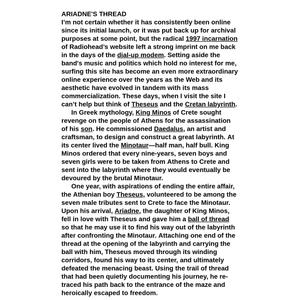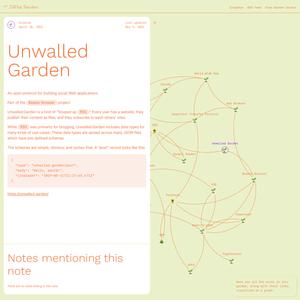
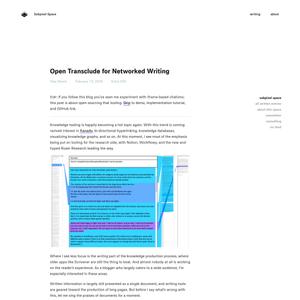
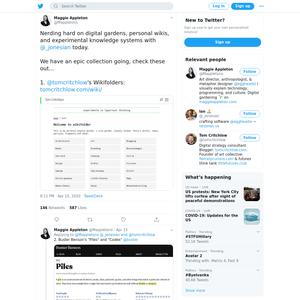
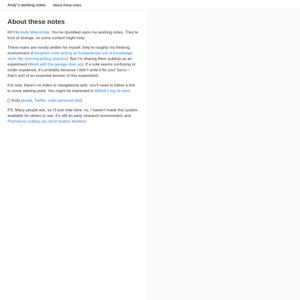
"Hypertext as the death of arcana, or how the click killed curiosity. The depth of the internet is, of course, limitless, a bottomless pit of html that can take us off and away on any number of unexpected byways and diversions. Yet is this expectation of diversion flattening out our experience of the physical world? The days of an internet where every stumble was a moment of true discovery are gone forever, perhaps, as curatorial zeal fast overtakes quiet collectomania as the principle online activity."
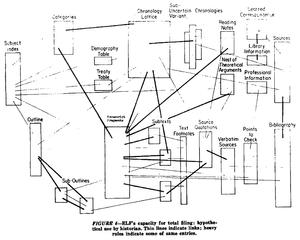
"But if the Internet of today had a Baron Haussmann, it would certainly be Facebook. Everything allowing for a casual stroll through cyberspace: solitude and individuality, anonymity and opacity, mystery and ambivalence, curiosity and risk-taking has been attacked by this Internet giant."
"From website to website, from left click to right click, from hyperlink to ‘back to last page’, we wander, browse, and roam through cyberspace."
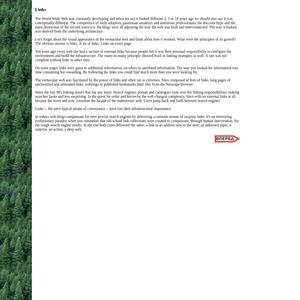
it refers to external content, for example through quotes or bibliographical references. It can thus be seen as a ‘node’ within a broader network of cultural content; it may be a starting or ending point, though usually it will be one of many intermediary points on a longer path. Such connections have of course always existed; what the hypertext structure (on which most digital media is still based) adds to this, is not so much a new model, as rather an exponential increase in scope and speed.
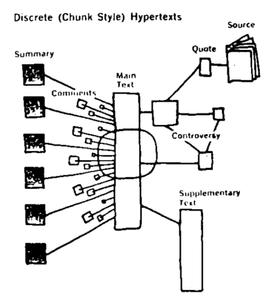

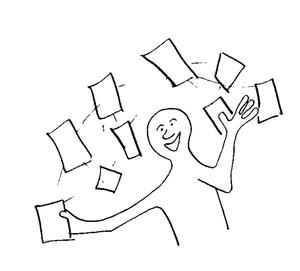
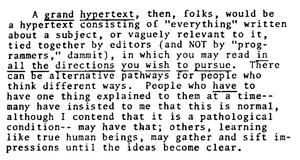
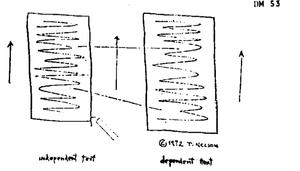




This was of course what Vannevar Bush said in 1945, in an article everybody cites but nobody reads.
In an important sense there are no "subjects" at all; there is only all knowledge, since the cross-connections among the myriad topics of this world simply cannot be divided up neatly. Hypertext at last offers the possibility of representing and exploring it all without carving it up destructively.
We've been speaking hypertext all our lives and never known it.
By "hypertext" I mean non-sequential writing. Ordinary writing is sequential for two reasons. First, it grew out of speech and speech-making, which have to be sequential; and second, because books are no convenient to read except in a sequence.
But the structures of ideas are not sequential. They tie together every whichway. And when we write, we are always trying to tie things together in non-sequential ways. The footnote is a break from sequence, but it cannot really be extended.
The point is, writers do better if they don't have to write in sequence (but may create multiple structures, branches and alternatives), and readers do better if they don't have to read in sequence, but may establish impressions, jump around, and try different pathways until they find the ones they want to study most closely.
Ted Nelson, who is a hero of mine and invented hypertext, had a conception of the web as a series of hardcoded attributions. So if you had an idea, every instance of your thinking online could be traced back to you (this inspired Saga).
